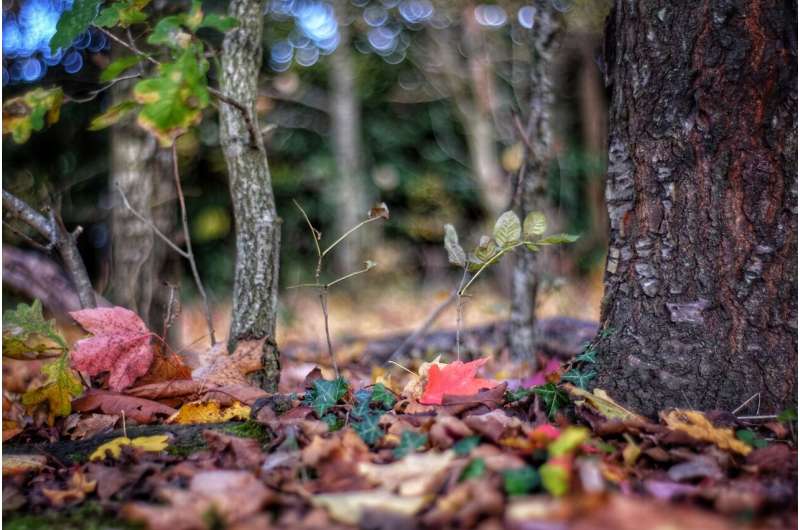This article has been reviewed according to Science X's editorial process and policies. Editors have highlighted the following attributes while ensuring the content's credibility:
fact-checked
peer-reviewed publication
proofread
Research provides new methods to improve capture rates of ground-dwelling arthropods using pitfall trapping

Pitfall traps are commonly used for capturing ground-dwelling arthropods, particularly beetles, ants, and spiders. The efficiency of a pitfall trapping system is significantly influenced by the quantity and size of traps, the spatial distribution of traps across the sampling area, and the movement characteristics of arthropods.
A study published in the journal Methods in Ecology and Evolution
used
The researchers investigated the capture efficiency of pitfall traps, considering the spatially explicit movement of arthropods, and determined the optimal trap separation distance that maximizes captures and how this spacing is influenced by trap size, trap number, and the size of the sampling area.
The study also explored four spatial arrangements of traps in a uniform landscape, that is the grid (rectangular array), transect, nested-cross, and randomized, and determined which of these captured more individuals and examined how this order may change under different sampling scenarios.
The study also analyzed the impact of arthropod movement on captures, considering factors such as diffusion and tortuosity. To enhance realism, the findings were contextualized by considering the movement patterns of a model species, the ground-dwelling carabid Pterostichus melanarius (Coleoptera: Carabidae), a highly mobile beetle frequently utilized as a biocontrol agent to manage pest insects and weeds.
Through simulations of trapping randomly moving ground-dwelling arthropods, it was shown that there is an optimal trap spacing that maximizes captures. This optimal distance can be expressed precisely in terms of trap opening sizes, sampling area, and the number of traps deployed. Additionally, for grid and nested-cross arrangements, larger trap spacing aimed at maximizing spatial coverage across the entire sampling area proved to be suboptimal.
A hierarchical order for spatial arrangements concerning capture efficiency over large sampling areas was observed, with the grid arrangement as the most capture efficient, followed by randomized, transect, and lastly, nested-cross. However, this order varied over smaller sampling areas due to differences in the rate at which trap counts accumulated with trap number, eventually saturating at distinct levels.
Regarding movement effects, capture efficiency is maximized within a narrow diffusive range and does not heavily depend on the type of spatial arrangement, indicating an approximate optimal mode of arthropod activity.
The approach considered multiple crucial aspects of experimental design in pitfall trapping, offering a foundation for optimizing and adapting sampling protocols for various types of traps to better align with their diverse purposes, such as monitoring, conservation, or pest management.
A researcher of the study, Dr. Danish Ali Ahmed from Gulf University for Science and Technology (Kuwait), said, "The theoretical basis for trapping ground-dwelling arthropods exhibiting random movement has been extensively developed and has undergone frequent testing and validation through empirical field studies."
"Our results are novel and an important development, as the effect of trap spacing on captures and which trap arrangements are more efficient had thus far been poorly understood. Information of this nature proves valuable for refining interpretations of trap counts and contributes to the development of more effective sampling strategies for monitoring or managing populations of arthropod species."
More information: Danish A. Ahmed et al, Simulating capture efficiency of pitfall traps based on sampling strategy and the movement of ground‐dwelling arthropods, Methods in Ecology and Evolution (2023). DOI: 10.1111/2041-210X.14174
Journal information: Methods in Ecology and Evolution
Provided by Gulf University for Science and Technology



















